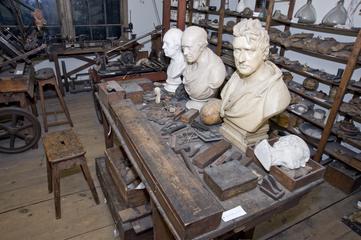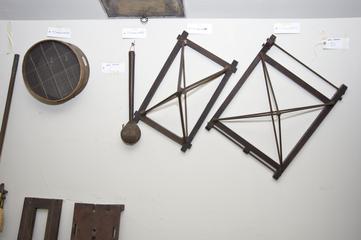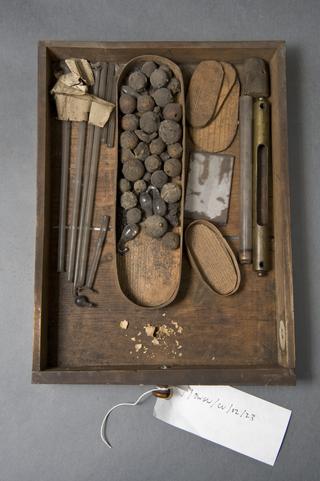
1 Convexo convex lens
- Made:
- 1790-1819






1 Convexo convex lens, 5" dia. In cardboard 7" x 6 1/2"
This item formed part of the contents of the workshop that Scottish engineer James Watt developed at his home, Heathfield, at Handsworth, Birmingham. Although Watt is best known for his work on the steam engine, his workshop contains a wide variety of objects from many different projects, from chemistry to sculpture-copying.
James Watt had a long-standing interest in capturing images, from his perspective drawing apparatus to letter-copying presses. His personal library included the whole of William Emerson’s ‘Elements of Optics’, and the workshop is full of optical items, including lenses from scientific instruments, many glass pieces. There are also a rectangle of silvered glass and a square of ground glass contained in this box which, along with two flint-glass lenses mounted in card from elsewhere among the museum’s Watt collections (inv nos 1926-1075/469 and /470), form the basis for a camera obscura - a device which creates an image of a subject caught in its lens.
Experimental work with these components has determined that they can create a viable image. The camera obscura was the basis of experiments in the nineteenth century to make a permanent image on a surface covered with silver nitrate, for example. Beyond the presence of the camera obscura parts, there is no physical sign that Watt was engaged in these experiments, but he wrote to Tom Wedgwood about ‘silver pictures’ in 1799 – a reminder of the vivid new technologies which Watt and his associates were involved with.
Details
- Category:
- James Watt's Garret Workshop
- Object Number:
- 1926-1075/470
- Materials:
- glass
- type:
- lens
- credit:
- Major J.M. Gibson-Watt



